The history of the prehistoric art movement tells us that it was arguably the very first or rather the OG art movement. It began roughly 50,000 years ago with the very first cave painting. The muse of this Stone Age art was a bison. Today these artworks, artifacts and ancient ingenious tools teach us so much about our Palaeolithic ancestors. We look at the products of the Prehistoric Art Movement to gain insight into the minds of these artists who made cave paintings.
What is the prehistoric art movement?
The art made during the Paleolithic, Mesolithic and Neolithic periods is part of the prehistoric cave art movement. It consisted mostly of cave paintings and engravings in stone called Petroglyphs. Early human art and culture, neolithic pottery and sculpture, ancient rock paintings and engravings are all considered prehistoric art.
When did the prehistoric art movement begin?
Archaeologists have found prehistoric art techniques and materials made during the Upper Paleolithic era. These findings date roughly between 50,000 to 12,000 years ago. One of the oldest cave paintings found is 45,000 years old in South Sulawesi, Indonesia. The painting seems to be of a bovine creature most likely a bull or bison.
Where is prehistoric cave art found?
Wherever there have been clusters of civilizations in the upper Paleolithic age, there are likely to have been cave drawings. Modern-day Africa, Asia and Europe have had such settlements.
What tools were used to make prehistoric art?
A chisel-like sharp tool made of stone was used to carve Petroglyphs on cave walls. Pigments and paints were made from red and yellow ochre, charcoal from burnt bones and kaolin clay. Twigs were likely used to apply these pigments on cave walls to make these drawings.
What are some famous artworks of the prehistoric art movement?
Homo Sapiens from the Upper Paleolithic age are mostly the artists who made prehistoric art.
Bull from Lubang Jeriji Saléh cave Indonesia – 40 to 52 thousand years old*
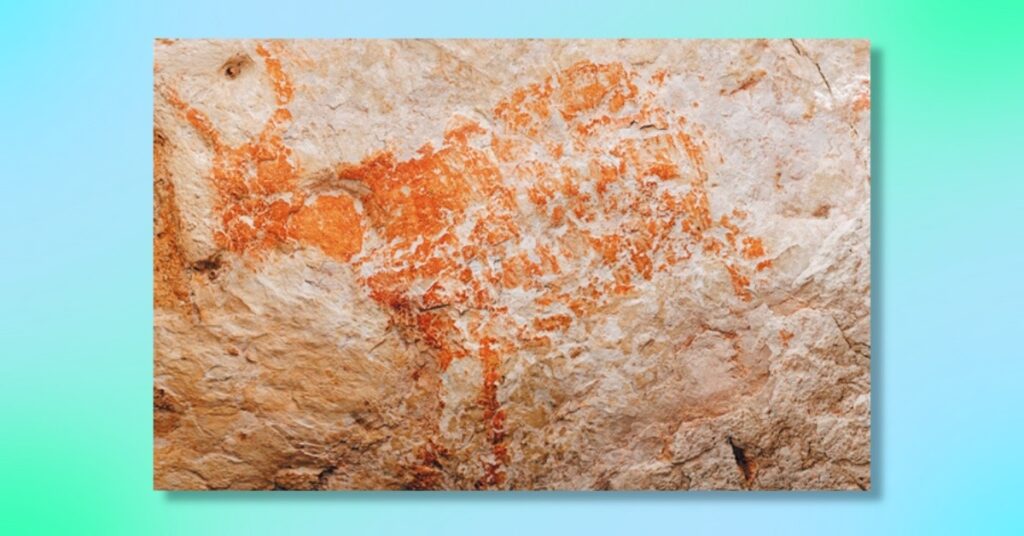
Rhino Drawings from Chauvet Cave France – 30 to 32 thousand years old*

Hands at the Cuevas de las Manos upon Río Pinturas Argentina – 7,300 BC to 700 AD*

Art Op-Ed: Interesting observations about Prehistoric Cave Art Movement
Art is one of the most definitive forms of human expression. What if an alien species were to be a connoisseur of human civilization and culture? The aliens might consider artistic expression a far greater human achievement than any progress made at a stock exchange or victories in war. This is not to say that any other mode of human expression is less but rather that art is arguably the best of humanity.
As children, we take to Crayola packs and A4 printer paper to scribble a yellow circle in the top left corner of the page. And of course 3 mountains below it, a stream of blue water, and a house in the bottom right corner with a happy dog. Not to forget the stick figures of the people we love strewn across light-green fields. We draw our version of life and our earliest artistic expression earns us a gold star in school. Later on, we exhibit that in our hall of fame with a fridge magnet. We are all artists with our love of colourful things, our preferred playlists, and poems that we write as teenagers for our valentines in class, despite it being a little too soppy.
Imagine 45,000-odd years ago, an early human sat in a cave and wanted nothing else to do but draw the bison they saw running earlier. Maybe they wanted to tell their tribesmen what they saw and a petroglyph was the only way to describe it. Or they might have wanted to simply draw it for the heck of it. Or maybe they wanted to recreate what they saw because their heart was bursting with emotion. Maybe drawing it was the only way to let it all out. There could be many interpretations of the meaning behind prehistoric art.
Prehistoric art has no credit given to specific artists, directors, curators, or famous exhibits. No credited artists and no commission details. Just the artwork and your imagination running wild. Palaeolithic art and symbolism are open to interpretation
Which art movement(s) came before the Prehistoric Art period?
The Prehistoric movement is one of the first known attempts at human expression through cave paintings. Prehistoric art, in a way, is the beginning of early human art and culture.
Which art movement(s) came after the Prehistoric Art period?
Ancient Art is arguably the first formal art movement that came after Prehistoric Art.
Top 7 Artworks of the Prehistoric Art Movement
Lascaux Caves, France: The Hall of the Bulls
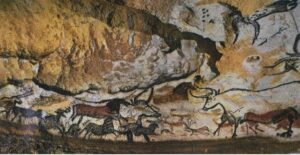
The Lascaux Caves, located in the Dordogne region of France, are renowned for their stunning Paleolithic cave paintings dating back approximately 17,000 years. Among the most famous is the “Hall of the Bulls,” which features larger-than-life depictions of aurochs, horses, and deer. One remarkable incident is how the discoverers initially mistook these ancient artworks for modern forgeries because of their exceptional quality and complexity.
Altamira Caves, Spain: The Discovery of the Sistine Chapel of Prehistoric Art
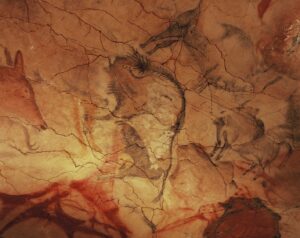
Altamira, often called the “Sistine Chapel of Prehistoric Art,” boasts intricate cave paintings dating back over 20,000 years. In the late 19th century, when amateur archaeologist Marcelino Sanz de Sautuola and his daughter Maria stumbled upon these remarkable artworks, they faced scepticism from the scientific community. It was only later that their authenticity was recognized, revolutionizing our understanding of prehistoric art.
Bhimbetka Caves, India: A Time Capsule of Ancient Art
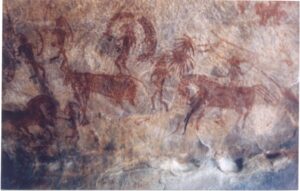
In the heart of India, the Bhimbetka Caves harbour rock art dating back to the Paleolithic period, with some estimates suggesting they are as old as 30,000 years. What’s fascinating is that the artwork here isn’t limited to a single era; it spans tens of thousands of years, providing a unique glimpse into the evolving artistic expressions of ancient Indians.
Serra da Capivara, Brazil: South America’s Ancient Artistry
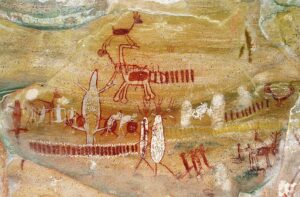
Serra da Capivara National Park in Brazil is home to a treasure trove of rock art, some of which is estimated to be around 25,000 years old. This site includes the depiction of extinct megafauna like giant sloths, as well as intricate scenes of daily life, hunting, and religious rituals, shedding light on the cultures of South America’s early inhabitants.
Kakadu National Park, Australia: Aboriginal Rock Art’s Timeless Story
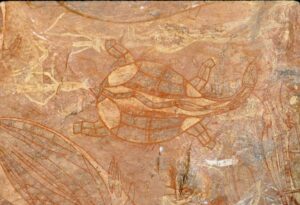
Australia’s Kakadu National Park is home to a rich tradition of Aboriginal rock art, with some paintings dating back 20,000 years. One intriguing story involves the “Lightning Man,” a prominent figure depicted in many artworks. This enigmatic character is associated with the power of lightning and rainmaking, highlighting the spiritual significance of the art.
Tassili n’Ajjer, Algeria: Saharan Art in the Desert

Tassili n’Ajjer, a remote plateau in the Sahara Desert, hosts an extraordinary collection of rock art dating as far back as 10,000 years. There is a striking depiction of ancient African life, including hunting scenes, rituals, and daily activities. These artworks offer a rare glimpse into the prehistoric cultures of the Sahara.
Niaux Cave, France: A Subterranean Art Gallery
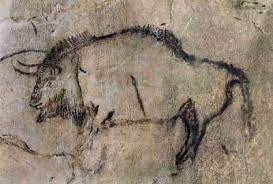
Niaux Cave in the French Pyrenees is renowned for its magnificent Paleolithic art. Visitors are struck by the sheer scale of some of the artworks, such as the “Salon Noir,” which spans over 80 feet. Niaux includes tales of ancient torches used by Paleolithic artists, hinting at the remarkable dedication it took to create these masterpieces deep within the earth.
Cave art from around the world provides a captivating tapestry of human creativity and culture spanning tens of thousands of years. These anecdotes remind us that the artistry of our ancestors, hidden in the depths of caves and rock shelters, continues to astound and inspire us today. These ancient masterpieces serve as a testament to the enduring human spirit and our unquenchable thirst for artistic expression, even in the most challenging of environments. As we uncover more about these hidden treasures, we not only gain insights into our past but also reaffirm the universal language of art that transcends time and borders.
*Images from Wiki Commons







0 Comments